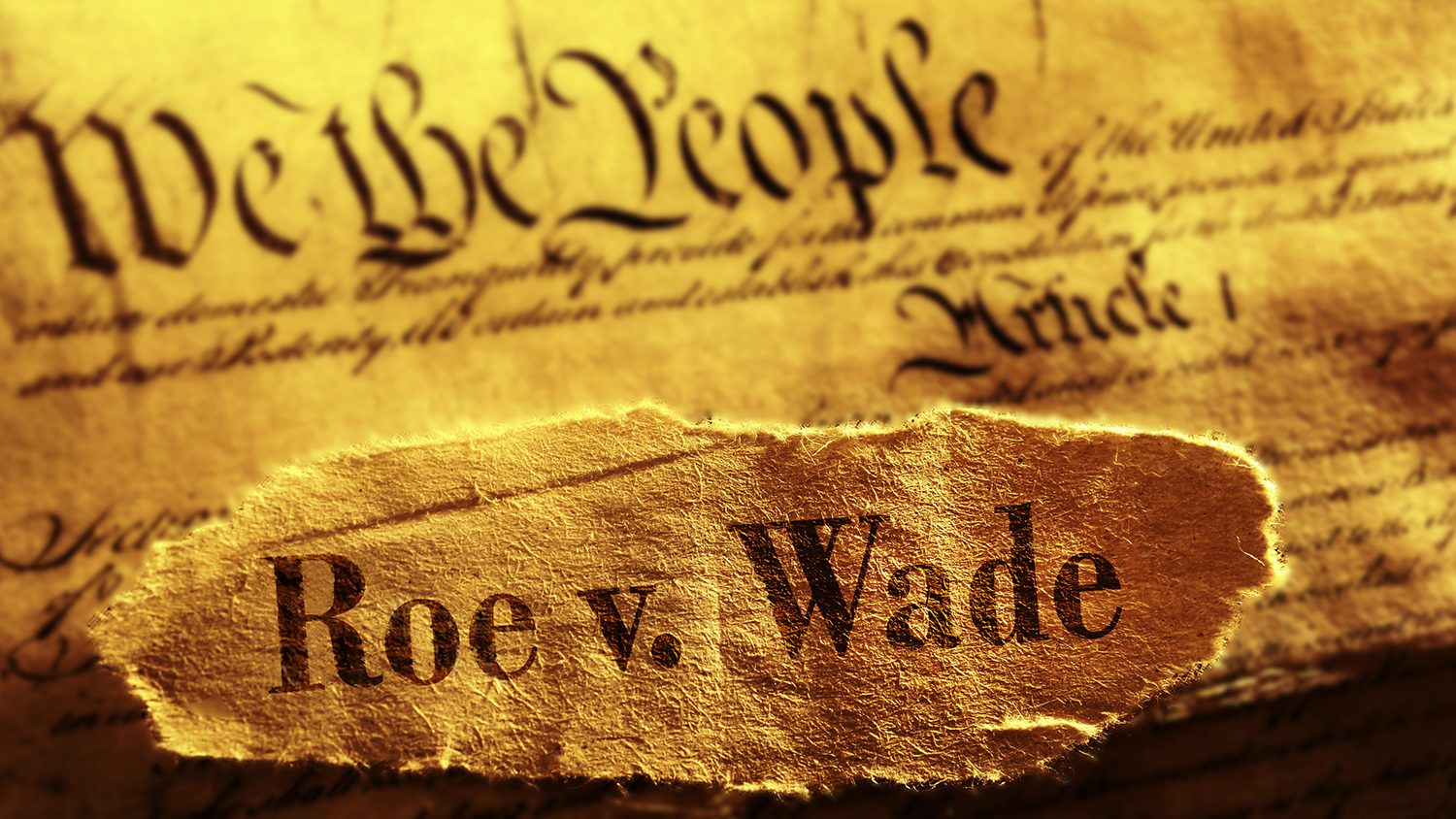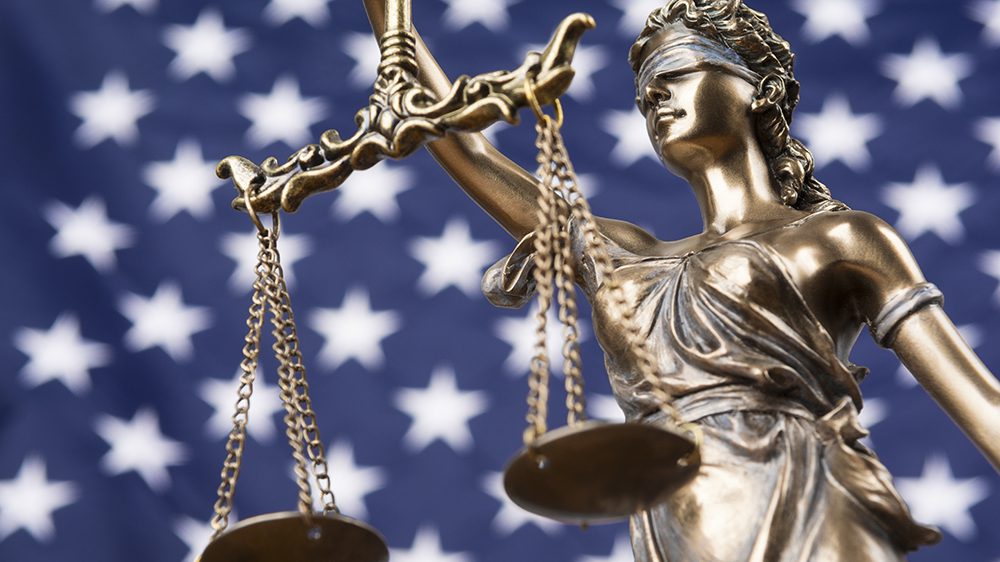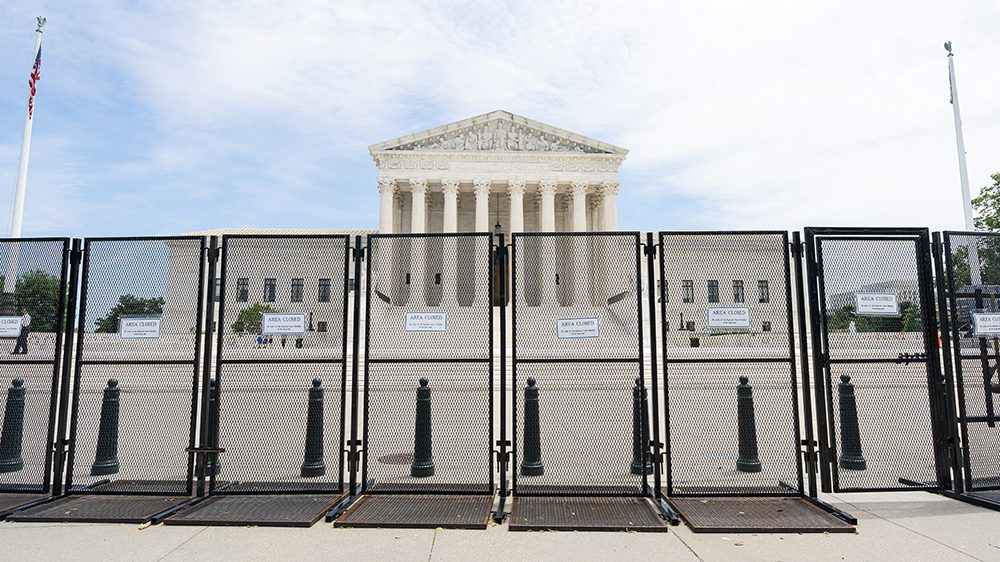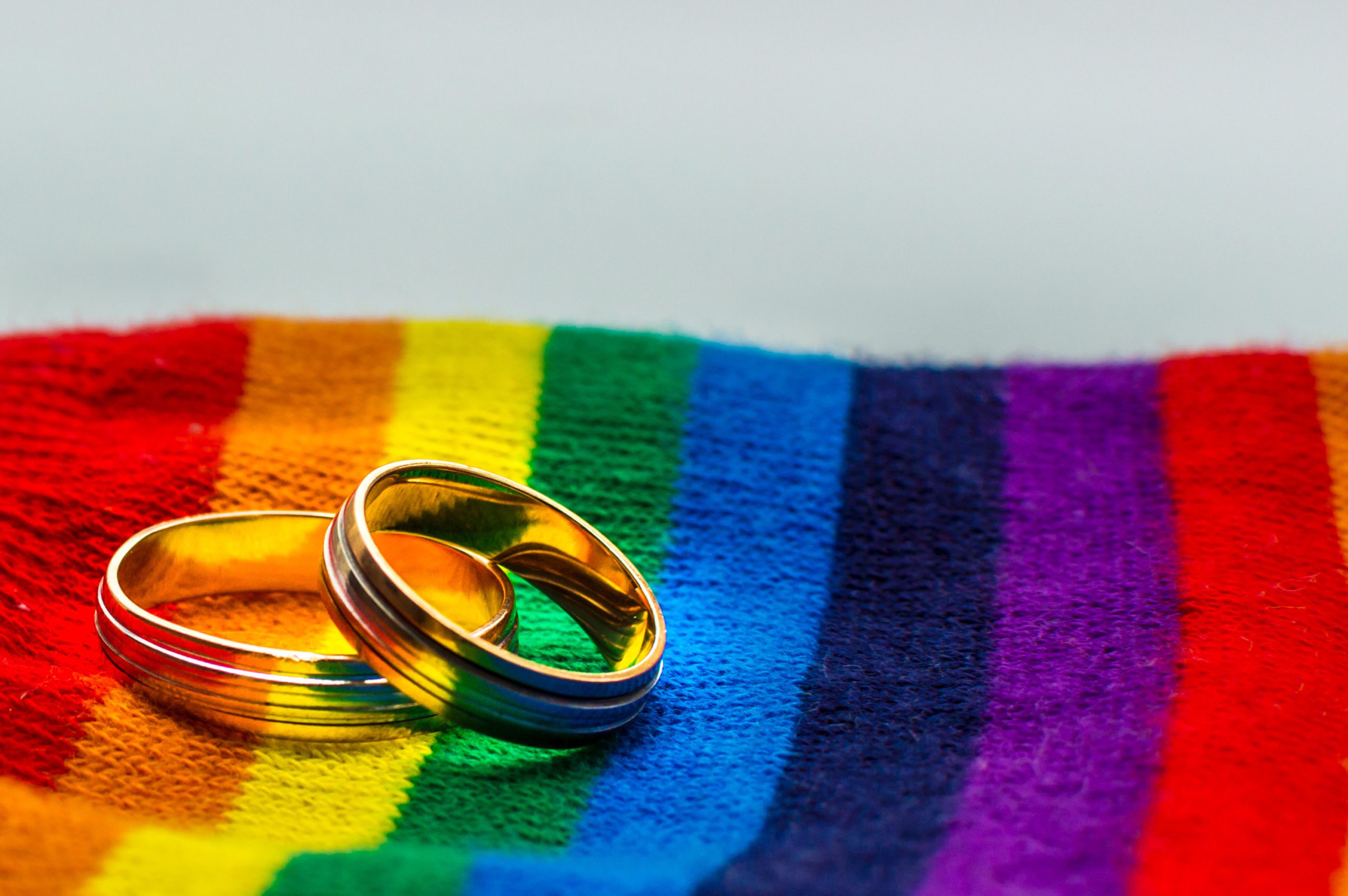Roe v Wade ruling by Supreme Court affects more than abortion rights

In the days following the Supreme Court’s decision to overturn Roe v. Wade, we asked Furman faculty members about the moment. They weighed in with expert perspectives representing government and politics (including Constitutional law and the Supreme Court), psychology, sociology, health care, history, art, education and English. Most of them also teach in Furman’s Women, Gender, and Sexuality Studies Program. Below are their answers, some of them slightly abbreviated, to a few relevant questions.
Q: What does the Supreme Court ruling of June 24 mean, exactly?
The Supreme Court has ruled that there is no constitutional right to an abortion. The Court overruled Roe v. Wade and Planned Parenthood of Southeastern Pa. v. Casey, which held, respectively, that abortion rights are rooted in a Constitutional right to privacy and in the 14th Amendment’s due process and liberty protection. The decision means that states may choose to prohibit abortions. The decision also suggests this Court might uphold a federal law that banned abortions. – Liz Smith, politics and international affairs
Reproductive rights are a public health issue. The U.S. already lags behind many of its peer countries when it comes to public health and the June 24th Supreme Court ruling sets the United States even further behind. Even in Ireland, with its high percentage of Catholics, termination of pregnancy is permitted and legal following a 2018 referendum when a woman suffering from a septic miscarriage died after being denied an abortion. Prior to 2018, Ireland experienced what the U.S. surely will once again: people dying because they were not allowed to safely terminate a pregnancy or leaving the country to undergo safe and legal abortions. – Savita Nair, professor of history and Asian studies; director, Women’s Gender and Sexuality Studies Program
Technically, only five justices overruled Roe and Casey. Chief Justice Roberts’ concurring opinion agreed with the result to uphold the Mississippi ban on abortions after 15 weeks, but he did not believe that the longstanding precedents had to be overturned to deem the Mississippi law constitutional. The bottom line, however, is that the five-person majority gutted Roe. As a result, state legislatures are allowed to write any abortion laws they desire unfettered from constitutional considerations as there is no U.S. constitutional protection for abortion.
States also have constitutions, and in certain states, notably Kansas, the Kansas Supreme Court has found that the Kansas Constitution puts significant constraints on the Kansas legislature regarding abortion. That is why anti-abortion groups are working in support of an amendment to the Kansas Constitution to change that language. The referendum is in August. That is likely to be one of the first big showdowns of the post-Dobbs era. – Glen Halva-Neubauer, professor of politics and international affairs.
Overturning Roe v. Wade on June 24 is not only about the abortion ban. It is about women and non-binary individuals’ access to safe abortion and exercising our reproductive rights. When we read this particular moment against the backdrop of recent worrisome developments of 2022, it becomes evident that overturning Roe is a part of a series of political actions attempting to regulate, discipline and control the bodies of women, queer and non-binary individuals. Only in 2022, almost 240 anti-LGBTQ bills were filed, the majority of which targeted transgender people. So, it is crucial to think about this recent development by going beyond the heteronormative binaries. We are facing a dangerous, unprecedented moment endangering the civil rights of cisgender women, BIPOC and LGBTQIA+ communities. – Tugce Kayaal, assistant professor of history
Q: How did Roe become vulnerable to being overturned?
Abortion has long been a controversial issue. In the years prior to Roe, however, many states were acting on their own to pass laws protecting abortion rights, in part because of increased awareness of the dangers to women’s health from illegal abortions as well as because of enhanced support for women’s rights and bodily autonomy. Roe was decided in part using precedent from cases that established rights to contraceptives, rooted in a right to privacy. The principle of stare decisis is a long-held standard used by the court to say that, unless there is some compelling reason, precedent should be upheld. Occasionally, precedents are overturned and this is based on the understanding of the law and Constitution made by those serving on the Court at the time. Roe, and then Casey, were understood to be established precedent. However, human beings sit on the Court and interpret the Constitution. Roe was especially vulnerable because of the composition of the Court – a conservative majority who decided this was a precedent that should be overturned. – Liz Smith
Today’s holding is the result of a long-term political strategy finally bearing fruit. It required that political parties align themselves on opposite sides of the abortion question, which was not the case in the early days following Roe. But the Republican party’s desire to break the back of the Democratic party in the South centered not only on desegregation, but on a host of cultural issues, of which abortion was the most important. And the Republican party went from paying lip service to the anti-abortion community to carrying its water to a greater and greater degree. Much of that energy among Republicans centered on changing the composition of the Court, and Trump’s election in 2016 combined with the Republican control of the Senate allowed the Republicans to put three justices on the Supreme Court during Trump’s term in office. What is unclear now, however, is whether the dog having caught the car, knows what forces have been unleashed. – Glen Halva-Neubauer
While abortion rights have been a hotly debated issue for decades, the vast majority of the American public supports access to abortions in almost, if not all, cases, indicating support for Roe v. Wade. Yet, Trump’s presidency put Roe in jeopardy when he appointed three conservative justices to the Supreme Court (Neil Gorsuch, Brett Kavanaugh, and Amy Coney Barrett), giving the Court a conservative supermajority to overturn abortion rights in this country. – Kylie Fisher, assistant professor of art history
As an American historian, I am especially interested in how the Supreme Court has defined the right to privacy over the past 60 years or so. The Supreme Court in Griswold and Roe and other more recent cases have cobbled together the right to privacy from a variety of constitutional amendments and many scholars have long worried that the reasoning was shaky to withstand a challenge. That has indeed happened. This taking away of rights to one’s body is indeed shocking. – Marian Strobel, William Montgomery Burnett Professor of History
Q: How far does this set us back as a society?
Very far. Some propose that it sets us back to well before 1973. This is predicted to have particularly egregious impacts on women of color. The United States is now among the countries that do not follow the World Health Organizations’ recommendation for “Person-centered, equitable and accessible abortion care (that) supports efficient use of resources and enables women to attain care in line with their values, preferences and circumstances.” – Savita Nair
Our family leave and workplace nursing policies belie women giving birth, breastfeeding, and raising children every day. Gender equality is not only a myth but has regressed in the U.S. This ruling illustrates that we live in a society where women’s bodies are seen as the state’s property. Their bodies do not belong to them. Meaningfully, there are no laws that violate men’s reproductive rights even though they can be a part of the process of making a baby. Second, this ruling also demonstrates that having women on the highest court in the land does not necessarily translate to laws and policies that prioritize women’s agency and life outcomes. In a society that privileges male bodies over female bodies, women and women-identifying people can be complicit and even active in the systems that support the oppression and suffering of people like them. We need to be careful about the kinds of people we put in power to represent us. – Sarah Adeyinka-Skold, assistant professor of sociology
I do not see history as a linear process encompassing a series of events leading to gradual change. History follows a series of multilayered and complex paths leading sideways. We witness many moments when it gets dark and oppressive, especially for individuals who are outcasted by the state’s power. When we consider everything happening in the country and the world, there is no doubt that this process leads us into a troublesome place as a society. However, we should never underestimate the power of our voice, actions, and agency. Here at Furman, we have a strong and respectful community dedicated to democratic values and civil rights. With our teaching, learning, and scholarship, I have no doubt that we will set a precedent for the importance of fighting back for our rights as a democratic community to prevent further damage from happening. – Tugce Kayaal
Q: What are the wide-ranging ramifications of this ruling?
One of the significant ramifications of this ruling is maternal-fetal health for women of color, especially Black and Indigenous women. Black women already have the highest infant- and maternity-mortality rates in the United States. These populations historically lack access to adequate, meaningful and culturally competent healthcare. We can expect the rates of risks and death related to pregnancy to rise among these groups. The ruling solved a problem that does not exist. Data show that addressing poverty is what leads to reduced rates of abortion, not banning or limiting access to abortion. – Sarah Adeyinka-Skold
I have a few takes on this question. First, I believe that the implementation of Dobbs will not happen immediately; there is likely to be a lengthy legal process that takes place even in states with trigger laws. Second, abortion was highly regulated and restricted already in many states; the Dobbs holding is obviously a larger shock to the system, but for poor, young, and rural women living in large swaths of the South and Midwest, abortion was already a difficult procedure to access. Third, with a good number of abortions being performed in blue states where access is likely to remain in place, the cumulative national affect may be smaller than originally thought. Fourth, and possibly most interesting, is what lies ahead in terms of this ruling serving as the catalyst for the organization of pro-reproductive rights supporters because of how medical care for women and their status in the work force has been affected by this holding. – Glen Halva-Neubauer
I fear that overturning Roe v. Wade will be the start of a precipitous stripping of women’s rights all over the place. Moreover, it will do damage to our already fragile healthcare system that has been plagued by injustices for far too long. – Kylie Fisher
Despite the large sums of money that the U.S. directs towards health care, the U.S. ranks the worst in maternal care and mortality compared with other developed countries. We already have a shortage of providers in women’s health and further restricting how they can practice will further decrease medical students from entering the field. These two facts, coupled with an increased number of women who will be forced to remain pregnant, will burden an already under-resourced area of medicine. Compared to high-income nations, the U.S. also ranks at the bottom in its ability to provide postpartum care.
We are going to see further inequalities. Several states have ended Medicaid funding to Planned Parenthood clinics that provide many health services to uninsured and low-income women. These services include primary health care screenings in addition to prenatal and postpartum care. It doesn’t end there. Although the Affordable Care Act requires Medicaid to cover midwifery, another service that provides quality and economical options to women, there are not enough midwives to meet the demand. While Medicaid provides postpartum care, it sets the maximum days covered to 60, but full recovery from childbirth takes six months (on average, and can take up to a year).
Beyond women becoming second-class citizens, not having a say in their own medical care, overturning Roe v. Wade, is fracturing an already broken system. – Victoria Turgeon, professor of biology, academic director of Prisma Health partnerships
The primary ramification is women’s and non-binary individuals’ access to safe abortion and practicing their reproductive rights. We know that particularly transgender men and women, as well as non-binary people, have been encountering significant problems finding a gynecologist for primary care, prenatal care and birth control. Moreover, we have entered into a very dangerous zone where the 2015 Obergefell v. Hodges rulings, requiring all states to grant and recognize same-sex marriages, are also under threat with discriminatory policies targeting the parental rights of LGBTQIA+ families. Thus, this decision’s potential to jeopardize 50 years of precedents worries me in that in addition to medical outcomes of the decision, at some point, we will witness attempts by state lawmakers to question the eligibility and ability to parenthood depending on sexual orientation. Unfortunately, we are seeing an unprecedented moment with all our hard-won civil and reproductive rights under attack. – Tugce Kayaal
Q: Are other human rights in jeopardy?
The decision in this case opens the door for other rights, including gay marriage and access to contraceptives, to be reconsidered by the Court. Like Roe and Casey, the protection of those rights by the Court relied on the understanding that there was a Constitutional right to privacy and liberty from governmental interference. Justice Thomas, in his concurring opinion, explicitly stated that the Court’s rulings which protected such rights as gay marriage, same-sex intimacy and contraceptive access should be re-examined on the same grounds that the Court decided that there was no constitutional right to an abortion. – Liz Smith
In overturning Roe, the majority’s decision potentially undermines other Supreme Court decisions based on the right to privacy. Most notably, these decisions include Griswold v. Connecticut (1965) (the right of married couples to purchase contraception, later expanded to include all adults); Lawrence v. Texas (2003) (the right of adults to engage in consensual sexual activities, including activities between individuals of the same sex/gender); and Obergefell v. Hodges (2015) (the right of same-sex/gender couples to be legally married).
If the decisions noted above are eventually overturned (based on the precedent of overturning Roe), then it would be left to the states and/or the federal government to enact laws that would either re-affirm the rights indicated above—or, equally possible, to pass laws prohibiting the various actions noted above. For example, absent a federal law affirming the right of same-sex/gender couples to be legally married (federal laws trump state laws), each state would be able to decide the matter for itself—thus, such marriages would likely be illegal in South Carolina, but legal in Massachusetts. If this sounds like turning the clock back, that is exactly what the majority who overturned Roe (and potentially other decisions) wants to do. It is no different from, say, returning to an era when each state could decide whether or not to operate racially segregated school systems. – A. Scott Henderson, William R. Kenan Jr. Professor of Education, Director of National and International Scholarships
Q: What will happen in South Carolina? Is there a trigger ban?
To my knowledge, there is no trigger law in South Carolina. I would look for South Carolina to write highly restrictive laws, but I am not sure how quickly they will be put into law. I suspect that Palmetto lawmakers may begin to hear from constituents that they never knew existed. For years, they have been making laws that were not necessarily implemented. With the power to make laws free from federal constitutional review that will actually have an impact, how does that change the calculus of voting? What constituencies may be created as a result of this law? – Glen Halva-Neubauer
How will you teach about this moment?
My teaching has always been intersectional. Teaching about this moment will be no different. This ruling is not simply about gender. It is also about class and race. I want students to understand how this ruling will impact women, non-binary and LGBTQ+ people who also happen to be poor and/or an ethno-racial minority. Using data and evidence, I will help them to step into these women’s shoes and imagine how their lives will be changed by this ruling. I will also challenge students to take as their evidence policies and their consequences and examine what they tell us about who matters in U.S. society and who does not. I want them to imagine what it could be like to have and live in a society where everyone matters. – Sarah Adeyinka-Skold
I emphasized to my American Government students in the spring about participating in politics and being knowledgeable about current events because these issues matter. It is my hope that decisions like this one will be the fire that gets even more of this political generation to understand our political system and work to reform it. – Glen Halva-Neubauer
This fall I am teaching a course about artistic representations of the human body (broadly defined). I had already planned to spend a few classes exploring activist art as it relates to protecting civil liberties involving our bodies, but now I will focus specifically on the abortion rights movement. – Kylie Fisher
I was struck by the fact that none of my students in a Stereotyping & Prejudice course knew where the slogan “the personal is political” originated or its most common contextual understanding. This coming year, I plan to use this decision to encourage students to think about “politics” in a more critical way, with the efforts of the 1960s/70s feminist movement as a guide in updating our own civic engagement for 2022 and beyond. – Nader Hakim, assistant professor of psychology
As a specialist in nineteenth-century British literature and culture, I view the demise of Roe within the broader history of limitations on the legal personhood, bodily autonomy, and medical freedoms of historically disempowered groups, including but not limited to cisgender women. For example, in my courses on Victorian (19th century British) literature and culture, we discuss the Contagious Diseases Acts of the 1860s, which were intended to reduce rates of sexually transmitted disease in the British armed forces. The CD Acts permitted police to arrest women suspected of engaging in sex work in army towns in order to subject these women to physically invasive and dehumanizing medical examinations. In practice, the CD Acts energized and emboldened the feminist cause, as this legislation became widely viewed as an overreach into women’s privacy and self-control. In teaching that moment in history now, I will ask students to consider whether the Supreme Court decision to reverse Roe v. Wade might have similar unintended consequences with regard to activism and public opinion. – Gretchen Braun, associate professor of English


